Is ‘The Terminator’ a Slasher Movie?
Many people claim The Terminator (1984) is a slasher movie, but how much truth is in that assessment? This article takes a look at both sides of the argument before making a reasoned conclusion about status of The Terminator as a slasher.

Table of Contents
Every once in a while, The Terminator (1984) will pop up in discussions about horror movies. Invariably, a large contingent of people will state, matter-of-factly, that The Terminator is a slasher movie. Not only that, but many people say it’s one of the best slasher movies of the 1980s.
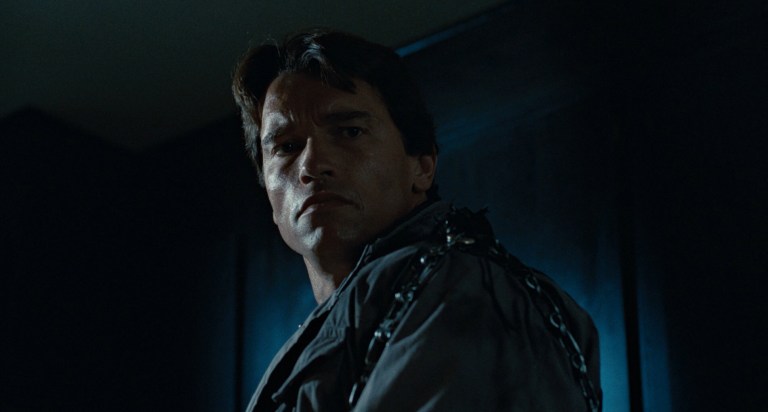
An immediate and honest reaction to that statement might be: “no it isn’t.” However, lots of people are confident in their assessment, and many articles about the topic have popped up on various movie sites in recent years. So, a rewatch of The Terminator through a slasher-movie lens is in order.
Most people will probably agree that if The Terminator actually is a slasher movie, then it is not a traditional example of the subgenre. For that reason, this article provides reasons supporting the idea of it being a slasher as well as reasons that refute that idea. The final section weighs both sides of the argument to come to a conclusion. But before all that, it’s important to define the slasher framework being used as a basis for the arguments.
Defining the Slasher Movie

Like any subgenre of film that contains multiple, specific hallmarks, there is no precise consensus among the public on what exactly makes a movie a slasher. There are general ideas and common tropes that most people can agree on, but there are plenty of movies that lie on the broad borderline of what can and cannot reasonably be considered a slasher film. Disagreement about those outliers will likely never be settled. Regardless, attempting to clearly define the slasher subgenre is a worthy endeavor given how important these movies are to countless horror fans.
Creepy Catalog has briefly outlined the basic requirements for a slasher movie before. To recap, the most important elements are the killer, the body count, the movie’s focus, the methods of murder, and, sometimes, the setting. Details regarding each of these elements are explored below in the examples for and against The Terminator being a slasher film, but those are the five main categories this analysis starts from. Specific tropes (like the final girl, “sex equals death,” etc.) also come into play, though they are not as important to genre classification as the five main elements.
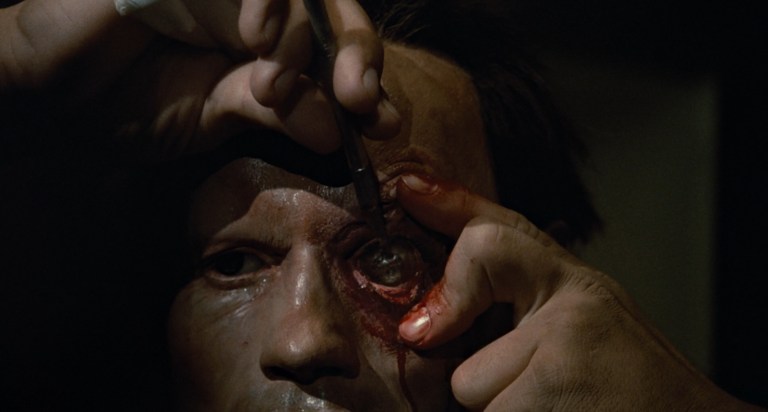
What makes a horror movie a slasher movie comes down primarily to the structure of the plot. Slasher plots typically consist of: stalk, isolate, kill, repeat. Then, after doing that a few times, the final scenes show the survivors confronting the killer and defeating them/it (or not). That plot, combined with enough relevant details from the five basic elements listed above, can qualify a movie as a slasher. With that in mind, the next section provides many details that suggest The Terminator absolutely is a slasher film.
Reasons Why The Terminator is a Slasher

First and foremost, The Terminator himself can easily be described as a variation of the classic slasher villain. He is an unstoppable killer in the vein of Michael Myers and Jason Voorhees. Like Michael, Jason, and many other killers of that type, Arnold Schwarzenegger’s T-800 is a silent stalker whose focus on his target is unshakable. Like many other slasher killers, the Terminator walks slowly most of the time, only rarely running to catch up to his prey. He is an intimidating presence with strength and focus beyond normal human capabilities.
The Terminator is also nearly impossible to kill. Like other killers who are more than human, the Terminator strides into danger and shrugs off bullets and knives with only cosmetic damage. And even when you think he’s dead, he rises to kill again (and again). An unstoppable, not-quite-human killer isn’t a necessity for a slasher movie. After all, movies like X (2022) and the Scream franchise have very human killers who can’t take much physical damage, but the thought of a slasher killer from the 1980s immediately brings to mind monstrous murderers who simply won’t stay dead.
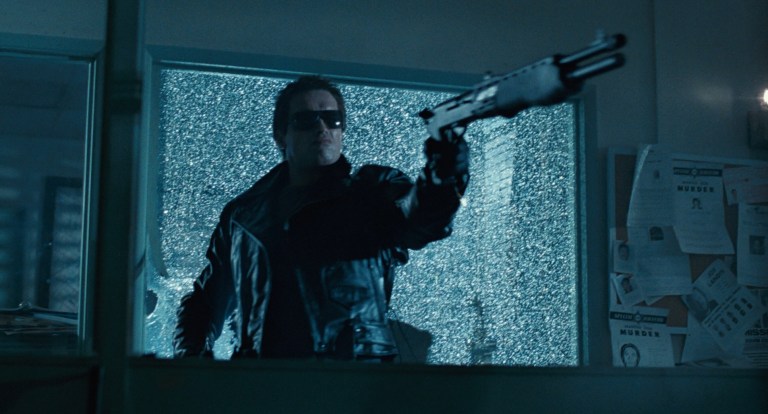
It should be no surprise that the Terminator closely resembles the more popular slasher villains of its time. James Cameron, who began his directing career with Piranha II: The Spawning (1982), says he idolized John Carpenter and what he did with Halloween (1978) when he was trying to establish himself as a director. “That was everyone’s break-in dream, to do a stylish horror movie,” said Cameron. “It was a very slasher film type image. And it really was the launching pad for the story.”
In years since Halloween, slashers had gotten increasingly violent in an attempt to outdo what had come before. For context, just compare the low body count and relatively bloodless horror of Halloween (1978) to the higher body count and gory murder in Halloween 2 (1981). The Terminator blows away most other slasher movies of its time with the T-800’s body count somewhere in the twenties even if you’re being conservative with which kills you count. The movie also gets quite bloody at times.

It’s not just about the number of people killed though. The way a slasher villain kills is also important. The very first murder the Terminator commits is a brutal punch to the chest of one of the punks (Brian Thompson) seen at the beginning of the movie. When the Terminator pulls his arm out of the new hole he created in the man’s body, his whole arm is covered in blood. For comparison, Jason once punched a guy’s head clean off (in Friday the 13th Part VIII: Jason Takes Manhattan).
The most obvious slasher-inspired kill happens a little later in the movie. When the Terminator shows up at Sarah Connor’s apartment, he arrives after Sarah’s roommate Ginger and her boyfriend Matt just finished having sex. Though it’s an overstated trope, many people associate sex with death in slasher movies. So what happens in The Terminator? Ginger’s boyfriend is beaten to death, his bloody body is thrown through a door so Ginger can see him, and the Terminator slowly approaches the terrified woman as she tries to crawl away. Then he shoots her. Many times. The whole scene is focused on violence and fear, and it is presented to the audience exactly like any number of other slasher movies. This is arguably The Terminator at its most horrific.

So far we have solid examples of a slasher killer, a high body count, and slasher-style methods of murder. Also present in The Terminator are various tropes often seen in slasher flicks. First, the police are completely ineffective in stopping the killer. Police officers in slasher movies are notoriously incompetent, or at the very least unprepared to the point of being a hindrance. Cops like Deputies Ross and Farrah in Halloween 5: The Revenge of Michael Myers (1989) take this trope to eye-rolling extremes, but even when played seriously, the police are usually more trouble than they’re worth in slashers. The police in The Terminator nearly get Sarah Connor and Kyle Reese killed by holding them in a place where they can easily be found.
Another recurring trope in slashers is that of a character who knows a lot about the killer and tries to stop them, but who comes across as crazy or dangerous to the people he tries to warn. These are characters like Dr. Loomis in the Halloween series and Tommy Jarvis in Friday the 13th Part VI: Jason Lives (1986). Kyle Reese is this exact character in The Terminator. He is called a “loon” by criminal psychologist Dr. Silberman, and even Sarah questions Reese’s outrageous story for a while.

If you’re not convinced that Reese and Loomis are essentially the same character, consider the speech Reese gives to Sarah about the danger of the Terminator. He says the killer cyborg “can’t be bargained with. It can’t be reasoned with. It doesn’t feel pity, or remorse, or pain.” Then compare that with Sam Loomis’s speech in Halloween when he says of Michael, “there was nothing left, no reason, no conscience, no understanding, in even the most rudimentary sense, of life or death, of good or evil.” Unquestionably, they both fill similar roles in their respective movie’s plot.

And then, of course, you have the Final Girl, Sarah Connor. The definition of what a Final Girl is has evolved over time since the term was coined by Carol J. Clover in 1992, but by most standards, Sarah Connor fits the role well. She begins the movie as the archetypal “girl next door” type. Her personality is more reserved when compared with her outgoing roommate Ginger, and she is helpless when first confronted with her would-be killer. Through her time with Reese, Sarah gains the confidence to take control of her fate by saving herself amid car crashes and explosions. Then, by the end, she delivers the killing blow (or rather, pushes the killer button) that finally ends the unkillable monster.
Reasons Why The Terminator is Not a Slasher
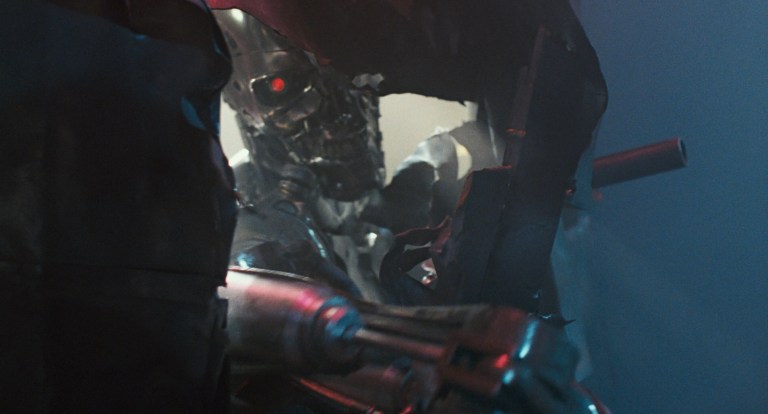
Just because the Terminator himself resembles some familiar slasher villains, unstoppable killers aren’t necessarily confined only to slasher movies. Monster movies typically include creatures that are as hard to kill as the T-800, but few people would consider something like The Blob (1988) to be a slasher movie. But even unkillable killers who are more human-like in nature and are associated with slasher franchises, like Candyman and Pinhead, first appeared in movies that arguably do not fit the formula of true slasher flicks (1992’s Candyman and 1987’s Hellraiser). So, just because a character looks like a slasher, that doesn’t mean they are a slasher.
Take, for example, the T-1000 played by Robert Patrick in Terminator 2: Judgment Day (1991). The T-1000 is just as scary as the T-800 in The Terminator. The T-1000 is a cold, emotionless killer like the T-800, and he is just as focused on his target, the young John Connor. Sticking with the idea of an unstoppable killer, the T-1000 is even more indestructible, since being blown to pieces is only a minor setback for him even though it is a major obstacle for the T-800. Plus, the T-1000 does more actual slashing, forming his hands and arms into bladed/pointed weapons to kill John Connor’s foster father and a security guard. But no one is claiming T2 is a slasher movie.
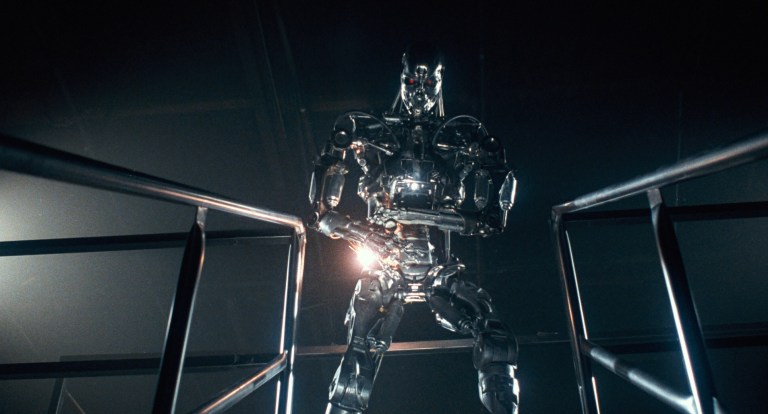
What this means is that a slasher movie isn’t just about having a character who appears to be a prototypical slasher killer, it’s more about the method in which that killer operates. It’s about the way they kill. Traditional implements used to kill in slasher movies include knives, obviously, but they also include a wide range of other weapons including anything to stab, slice, gouge, beat, and crush the human body. The common thread among all of these methods is that the killer and their victim are in close contact with each other. That close connection between killer and victim is vital to the tone of the slasher film. For that reason, impersonal methods, like shooting, are rarely used. The T-800’s preferred weapons are all guns, and that puts his status as a slasher villain into serious question.
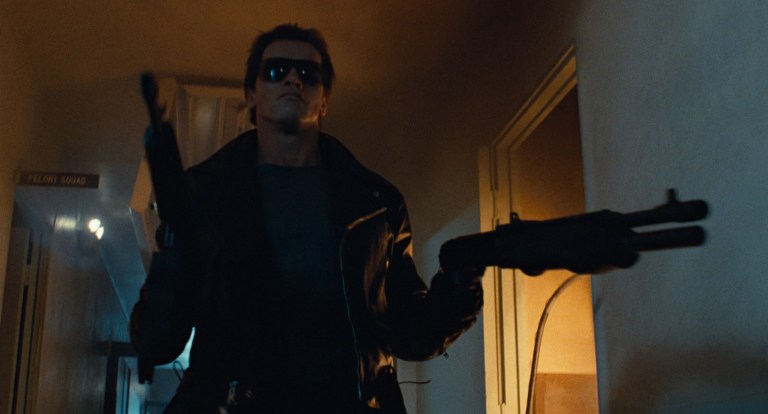
Of course, there are plenty of exceptions to the rule of slasher killers not using guns. This same debate came to the forefront of the horror community when Ghostface was seen brandishing a shotgun in the first trailer for Scream VI (2023). The argument then, as it is now, is that slasher villains only use guns in extremely rare circumstances. This is a fact that has been true since the subgenre became recognized. Carol J. Clover stated this observation very plainly in her often-cited book Men, Women, and Chainsaws: “In the hands of the killer, at least, guns have no place in slasher films.”

There are only a few slasher-style kills in The Terminator. The majority of the T-800’s murders are committed using guns in scenes that would just as easily work in an action thriller. The Terminator’s raid on the police station is a prime example of this. Though the settings might be different, the machine-gun slaughter of numerous people in The Terminator is akin to something you’d see in a 1980’s action movie like Rambo: First Blood Part 2 (1985) or Commando (1985). These comparisons also point out the fact that just because a movie has a high body count, that doesn’t make it a slasher.
Also, as a killer, the T-800 doesn’t really follow the slasher’s “stalk, isolate, kill” pattern that makes up the majority of the subgenre. For one thing, the Terminator isn’t very concerned with isolating anyone. He is just fine murdering his targets in front of a crowd like the Tech Noir club he finds Sarah in. Sure, Jason Voorhees has performed in front of an audience such as when he invades a rave in a cornfield in Freddy vs. Jason (2003), and Freddy Krueger attacks a group of people at a pool party in A Nightmare on Elm Street 2: Freddy’s Revenge (1985). But those are exceptions within movies that otherwise mostly follow the intentional isolation rule of a slasher villain. The T-800 repeatedly eschews this rule.

As for stalking, the Terminator stalks the three Sarah Connors he finds in the phone book, but the stalk-and-kill of one of the wrong Sarahs happens completely off camera. The other wrong Sarah is barely stalked, and the actual killing happens off screen in a scene that could be from a crime thriller. For most of the movie, the only real stalking we see the Terminator do is with the correct Sarah Connor as played by Linda Hamilton. Watching the Terminator follow Sarah makes up the majority of the movie, and it leads to a cat-and-mouse scenario that results in car chases and explosions that would fit neatly into any action movie.
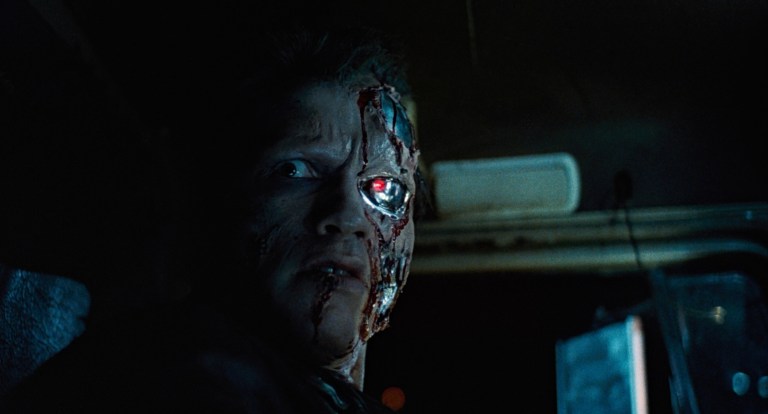
The focus of The Terminator as a whole movie should also be examined. Even if you consider the first part of the film to be inspired by slashers, that all ends after around thirty minutes. Once Ginger is killed and the T-800 finally starts following the correct Sarah, any semblance of a slasher-specific plot is gone. From then on, it’s more about blazing guns, high-speed chases, and explaining its sci-fi backstory. That said, there are absolutely still elements of monster movies and horror films throughout the entire runtime. The Terminator performing surgery on himself, and the continued destruction of the Terminator’s organic skin are both bloody and disturbing enough to be considered horror. The final fight with the Terminator is also straight out of a horror film. But crucially, it’s not necessarily straight out of a slasher film. It can be, but showdowns with monsters/killers predate the slasher subgenre by many, many years.
So, Is The Terminator a Slasher Movie?
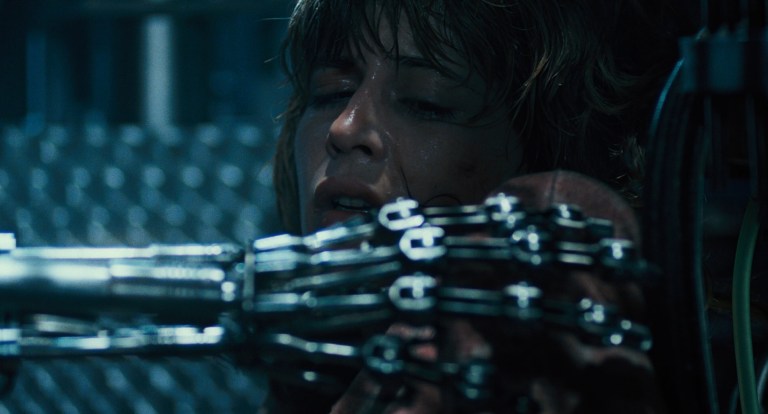
It is clear that James Cameron used the slasher movies of the time as a starting point for the story. His idea for The Terminator originated in a dream he had about a chrome skeleton emerging from fire, and the slashers of the late 1970s and early 1980s provided a framework to begin shaping his nightmare into a film. However, just because a movie is inspired by a certain film, that doesn’t mean the original movie and the movie it inspired have to belong to the same genre. After all, Halloween (1978) draws on elements of Psycho (1960), but Psycho is not a slasher (it’s more of a proto-slasher). And that brings us to the conclusion.
Is The Terminator a slasher film? Sort of, but not really.
That might sound like a cop-out answer, but it’s true. Genres aren’t either/or, they’re yes/and. Yes, The Terminator is a science fiction movie, and it’s an action movie, and it’s kind of a slasher movie. Well, for about thirty minutes it’s kind of a slasher movie. Then it becomes a sci-fi, action, and sort-of monster movie.
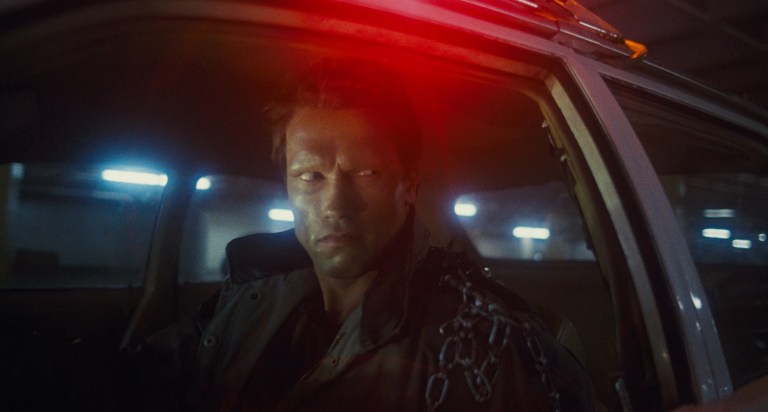
The main trouble with going all-in with an endorsement of The Terminator as a slasher comes down primarily to the lack of focus on the film’s individual kills, and the manner in which those kills play out. Slasher movies build tension around the death of a character, increasing that tension before releasing it with a bloody act (or at least the insinuation of a bloody act if there’s a cutaway to hide the gore). Then they move on to the next victim and the cycle begins again. The only victims really built up to in The Terminator are Matt, Ginger, and maybe the wrong Sarah if you’re being generous. The rest of the sudden and impersonal deaths in the movie overshadow those few.
Granted, the final struggle between Sarah and the T-800 feels like a Final Girl battle, but it would also be perfectly at home in many different types of horror movies. Not just slashers. That same idea is true for many of the other tropes seen in The Terminator. Kyle Reese fitting the Dr. Loomis role, a couple dying after having sex, etc. While people associate those things with slasher movies, they aren’t exclusive to the subgenre. Besides, a slasher movie isn’t formed by the sum of its cliches, it’s recognized by its focus and format. The Terminator doesn’t match the slasher focus and format for more than two-thirds of its runtime.

So, if you want a definitive answer, no, The Terminator is not a slasher movie. Not enough to be labeled as such before the other genres it belongs to. But how much does that matter? If you want to call it a slasher movie, fine. It’s a conversation starter if nothing else. It can lead to discussions about other films that don’t appear to be traditional slasher movies, but very well might be part of the broader slasher canon. Like Alien (1979) and Predator (1987). Or what about Jaws (1975)? Can a shark be a slasher? No, probably not, but the argument has been made by people before.
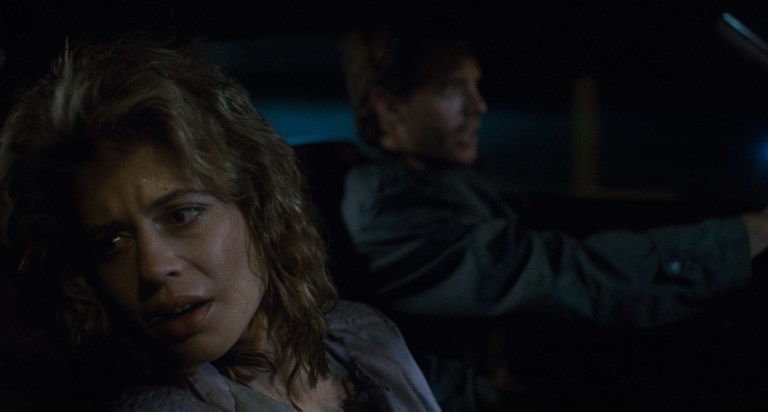
When a categorization gets too broad though, it begins to lose any sort of significance. A cynical view sees genres as marketing tools, but a more reasoned approach sees genre definitions as a better way to understand the art of film. For instance, tracing the lineage of Psycho, to Halloween, to The Terminator can help illuminate the changes not only in horror cinema, but in the way changes in society led to a specific evolution of horror. Trying to connect Psycho to Jaws, however, isn’t going to be terribly useful for most people. So, there have to be limits. Even though it might be fun to explain to people why you think The Terminator is a slasher film, the limits of the subgenre mean your explanation is only a small part of the truth.
